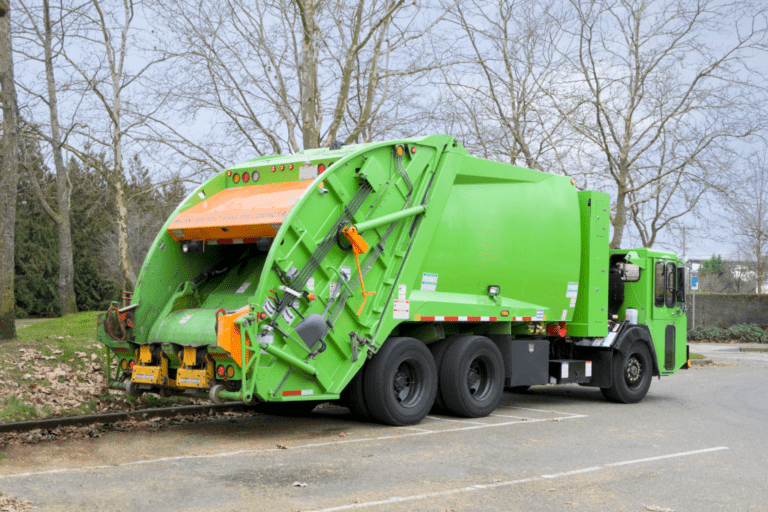There’s been a lot of talk about the truck driver shortage. Unfortunately, this shortage means that some fleets will be hiring drivers who might not have a lot of experience—and with that inexperience comes some mistakes and weaknesses.
But every experienced driver was new at one time, so lack of experience doesn’t mean that someone isn’t going to be a valuable team member. It’s just a matter of finding ways to help them avoid some of the traps that plague new drivers.
Here are ten things new drivers need to avoid and some ways you can help them.
1. Misjudging corners
Whether it’s underestimating the space they have or taking a curve faster than they should, corners can quickly separate the most seasoned drivers from new ones.
There are excellent truck driving schools that can teach the guidelines and rules around cornering big rigs and offer real-life experiences. But over time, drivers develop an almost sixth sense for how much room they need—especially for right-hand turns. And where rookie drivers can occasionally feel rushed to navigate a corner, which creates mistakes, more experienced truckers are willing to hold up traffic if it means cornering safely.
Occasional workshops can be a helpful way to remind newer drivers of the dangers of misjudging corners. It doesn’t have to be anything incredibly formal. Even giving seasoned drivers an opportunity to talk about some of the mistakes they’ve made and what they learned from them can help immensely.
2. Overconfidence
You don’t need to be a new driver to be overconfident. In fact, after several years on the road, there’s a danger that drivers can become a little less vigilant, overly trusting in the skills they’ve gained through years of experience. But there is a distinct value to the time seasoned drivers spend on the road, and often newer drivers have all the confidence without nearly as much experience.
It’s important to remember that a CDL represents the minimum requirements for road safety. Once a driver starts getting some actual miles under their tires, they realize that the key to a long, safe career behind the wheel is finding a balance between being comfortable and being teachable.
Mentorship can be helpful for new drivers. It will have a significant impact if you can steer your more trustworthy and experienced drivers toward newer drivers.
3. Trusting the wrong GPS services/devices
Many rookie drivers have a story about when they grabbed their GPS device from their car and threw it in their truck for a long haul only to run into trouble. Typical GPS services aren’t created with trucks and trailers in mind. And the last thing you want is to have one of your vehicles stuck on a street with a bridge that’s too low to navigate with no room to turn around.
Having a navigation system that calculates routes with your truck’s dimensions in mind is hugely important. Every fleet should have some approved GPS systems available or at least recognized, so new drivers don’t have to figure it out on their own. The more you can talk through specific scenarios that are especially difficult, the better.
4. Backing up too boldly
Overconfidence can creep in while backing up, too. Maybe it’s trying to back up too quickly or neglecting to get out and double-check the space for obstructions or problems. Of all the driving skills to master, backing up is one of the most challenging. In fact, some seasoned drivers will tell you that you never actually master it at all.
An experienced driver learns some very critical skills:
- Understanding the relationship between the steering wheel, the cab, and the trailer
- Getting out to check—multiple times if necessary
- Checking your tandems
- Using your mirrors
- Watching your axles, not just the trailer
- (And perhaps most important) knowing when backing up isn’t worth the effort
Some fleets have found success with annual BBQs and backing up competitions. They find a big parking lot and have contests around some orchestrated scenarios. This can be a fun way to see your drivers in action, provide some coaching, and allow newer drivers to see the experienced ones in action.
5. Pushing themselves too hard
An old adage suggests that the difference between a skillful woodcutter and an apprentice is that the experienced woodcutter will take time to sharpen their saw. An inexperienced apprentice doesn’t want to “waste time” on a task like that. But that one action allows the seasoned woodcutter to do more with less.
There can be a similar culture among new truck drivers, except in this case, their health is the saw. Drivers have been known to push themselves with too little sleep and not enough sustenance. In fact, there have been times when overdoing it was a celebrated part of driver culture. But in the end, this puts drivers (and everyone else) at risk. And FMCSA regulations are in place to ensure that drivers get the rest they need.
Be careful not to give mixed messages to drivers. Make sure they have reasonable expectations and encourage them to take care of themselves on the road. And be sure not to unintentionally incentivize unhealthy driving habits.
6. Taking bad advice
While you definitely want new folks to solicit input from industry leaders and drivers with more experience, you need to be careful. Not all input is helpful, and it takes some discernment to sift through what others may tell them about driving experiences and navigating the trucking industry.
This has become an even more significant challenge with social media. And a lot of the people online offering input and advice aren’t necessarily experienced. Your drivers really don’t need someone with only a year or two more experience offering suggestions that are not trustworthy. Even the advice provided by experienced truckers can be a mixed bag. So newer drivers need to be discerning about the direction they take.
Encouraging mentoring relationships is essential for this purpose. If you can help a new driver build relationships between professionals you know to be wise and skilled, they will get reliable advice and be better equipped to recognize poor counsel. This is also why it’s essential to recognize good drivers. It not only makes them feel appreciated, but it allows new drivers to easily identify potential mentors and examples to emulate.
7. Rushing through details
Drivers are often on tight schedules. This can make them rush through or forget critical things like:
- Rolling down landing gear
- Unhooking airlines
- Completing daily inspections
- Getting bills of lading signed
These details are so important. The smallest mistake can end up costing a load of time, money, and effort. There’s something to be said about knowing when you need to slow down and ensure you nail the details. The pros have learned (often the hard way) the moments they cannot afford to be on autopilot.
Not everyone you hire will be a detail-oriented person, so think of ways to slow them down and help them take the time to make sure everything is getting done. With Whip Around, you can create custom checklists to help keep them on the path. Maybe new drivers need an extra checklist when making a delivery to ensure they’re crossing all their ts. And it might not be something they’ll need forever, but it can help them get in the habit of taking their time.
8. Disorganization
No one gets into truck driving for the paperwork. And it can be a little disconcerting to discover how much there is. But staying on top of it is critical. You might hire the greatest new driver on the planet, but their disorganization can cost you. Losing inspection forms, receipts, or bills of lading, neglecting your time log, forgetting to keep money on hand for tolls and unloading, all of these things turn into problems and eventually undermine their relationship with you, their employer.
If the cab of their truck is always a mess, it’s probably a sign that they struggle to stay organized. It’s critical to have a system to help them stay on top of stuff and not let things fall through the cracks. Not everyone is detail-oriented, and that’s OK. But they need to be organized enough to get the job done.
One way Whip Around helps is that it takes paper out of the equation. After a driver fills out their inspection, it’s uploaded to the cloud. They don’t have to carry it around with them in the cab of their truck. In fact, with the ability to upload pictures with inspection reports, drivers can show you their cab every day. If their cab is clean and organized, it’s a lot more likely that they’re taking care of other daily details.
9. Not maintaining a good rapport with others
Long-haul trucking is an appealing job for introverts. If someone likes being alone for stretches of time, it’s the perfect vocation. But that doesn’t mean that relationships with colleagues aren’t important. They still need to maintain a good rapport with fleet managers, mechanics, dispatchers, shipping receivers, etc. They can’t afford to develop a reputation for being difficult or unfriendly.
Over the years, a trucker stereotype has been established that paints drivers as gruff, rebellious, straight shooters. It can take a bit of work to wean some new drivers off of this generalization, and you want to do it before they muck things up with their colleagues.
Everyone wants to do their job to the best of their ability. Mechanics and dispatchers are not there to hassle or annoy drivers. And the easier it is for them to do their job, the more likely it is that they’ll assist your drivers whenever they can.
There are ways that fleet managers can keep communication open and help things run more smoothly between various departments, and Whip Around can help. For example, if a fault is noted during an inspection, you can be immediately notified and easily craft a work order to get it fixed immediately. This reduces lag time and helps drivers feel like their issues are a priority. Li
10. Disregarding safety precautions and protocols
Most drivers want to be safe and protect others on the road, but at the same time, they can feel like safety formalities are nothing more than bureaucratic red tape. But if they’re ignoring what they consider to be time-wasting safety regulations, they end up putting themselves, others, and the company’s reputation and financial viability at risk.
Fleet managers need to be careful about how they discuss safety protocols with their fleet. If you talk about inspections and DOT regulations as obligations you have to fulfill simply to keep government bureaucrats off your back, new drivers are not going to take them seriously and only do the bare minimum required to meet those expectations. And that dismissive posture will transfer over to in-house expectations as well.
Using Whip Around to manage safety protocols can help. The ability to customize checklists with images can help ensure that drivers are actually doing a 360º walk around during their inspections. If there are areas of concern you want to hone in on, you can add fields to your checklist, so you get to choose your level of inspection detail.
New drivers need time to mature, and it’s not always possible to microwave the process. But with tools like Whip Around, you can create a stable structure that allows for greater accountability and incentive to stay organized and safe.
If you’re interested in learning more about Whip Around, book a demo or start a free trial today!









